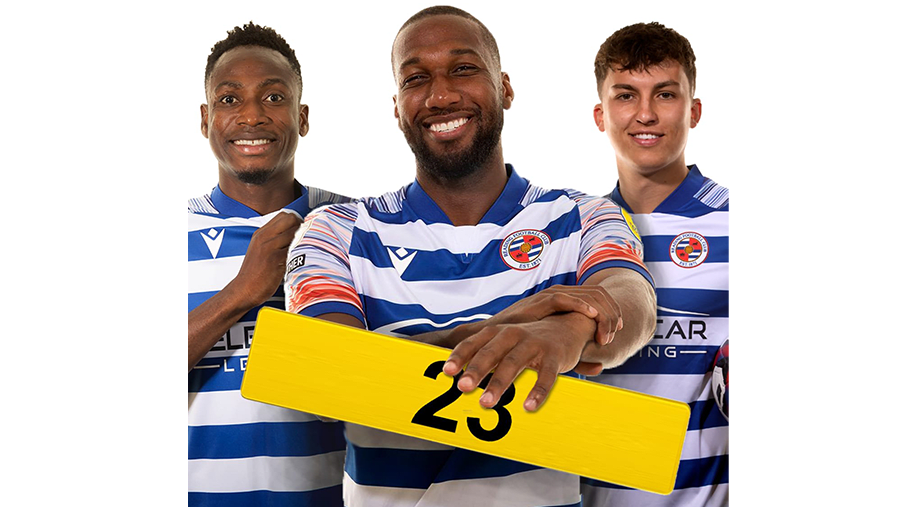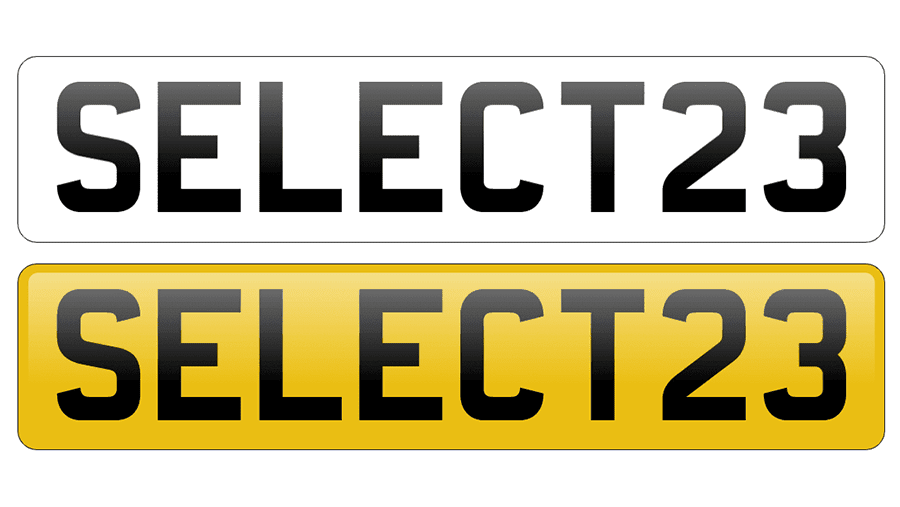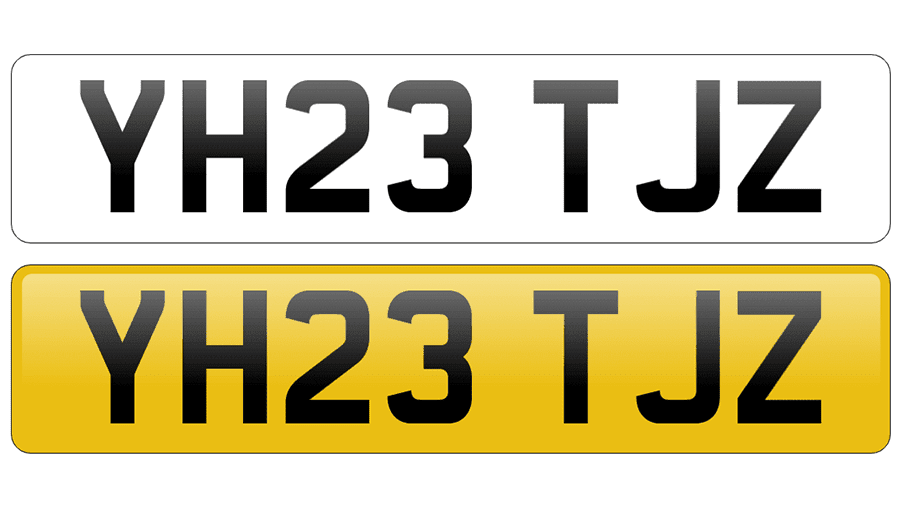Michael Jordan, LeBron James, David Beckham, Robbie Fowler, and cup-winning Manchester United left-back Luke Shaw - there are plenty of sporting greats who have worn the number ‘23’ with pride.
As sponsors of Championship football side Reading F.C, here at Select Car Leasing we’ve also got to mention the club’s own No. 23, Canadian international Junior Hoilett (centre, below).

And now YOU can join those ball-playing stars… thanks to the launch of a brand new ‘23’ vehicle registration plate!
As of Wednesday 1st March 2023, any new cars registered will feature the number ‘23’.
In the UK we have a new vehicle registration launch twice every year - with the next one taking place in September 2023, when we get a ‘73’ plate.
Why is it important, and how does it all work? Read on to find out!

New 23 registration plate
Having a vehicle that displays the ‘23’ plate tells everyone else on the road that you’re bang on trend and driving a brand new car fitted with all the very latest comfort, convenience and safety technology.
We recognise that while it might be a trivial thing for some motorists, it’s hugely important to many of our lease customers - and we all like to stay ahead of the curve.
Gaining access to a gleaming new motor is also one of the fantastic benefits of leasing a vehicle - and you can swap cars every two or three years, depending on the length of your contract.
The new plate registration date is also the perfect way to keep manufacturers on their toes, ensuring they’re always ready to launch facelifted vehicles, fresh interior updates, or new models entirely.

How the registration plate system works
Let’s be honest - the vehicle registration plate system can be a little confusing.
Do you know the difference between a ‘23’ plate and a ‘73’ plate?
Let’s rewind slightly and remind you how the system USED to work.
Before the year 2001, you could tell how new, or old, a car was based on the first letter displayed on the registration plate. So, a car with an ‘Y’ plate was registered between 1 March 2001 and 31 August 2001, for example.

So what changed?
The old registration plate habit had to die - simply because the former system was overwhelmed by the number of news cars on the road. We needed a new plan to get them all registered.
And just have a look at the figures.
Back in 1998 there were 2.1 million new car registrations in the UK.
Fast forward 20 years to 2018, and there were 2.9 million vehicles registered during that year.
So, we needed a new way of doing things.

Vehicle registration plates now - ‘23’
Since 2001, which was the turning point on vehicle registration plates, we’ve had a system where you get seven ‘characters’ on your number plate, being either letters or numbers.
The first two letters is an ‘area code’, which signifies the region and local DVLA (Driver and Vehicle Licensing Agency) registering office. So, if your plate begins ‘YH’ it was registered in Leeds, West Yorkshire, and if it begins ‘SK’ it was first registered in Edinburgh, Scotland.
The next two characters you’ll see on a registration plate are two numbers. This is the ‘age identifier’, and it’s where the ‘23’ bit comes in this year.
The last three letters are just random characters that distinguish your car from others registered locally at the time.

Vehicle registration plate age identifier - ‘23’ explained
As of March 1st, all vehicles registered in the UK will have a ‘23’ age identifier.
Simple, eh? It’s just the year. In March of next year, 2024, we’ll be looking at ‘24’ plates.
The tricky bit comes when the second vehicle registration plate of the year is launched in September.
All you do is add a value of 50 to whatever year it is. So, come September of 2023 we’ll have ‘73’ plates (50+2 = 73).
And in September of 2024 we’ll have ‘74’ plates.
We will, however, need a completely new system once the calendar reaches 2050, as adding 50 to ‘50’ might cause lots of new problems.
But that’s for the DVLA to sort - so we’ll leave them with that future headache!

Why do we have vehicle registration plates in the first place?
Long story short, it’s to keep you and everyone around us safe - and our vehicles, where we left them.
Every vehicle registered is given a registration plate by the DVLA, and that plate is kept on a national database, along with the address of the registered keeper.
Any motorists breaking the law can be brought to book, and it also means you can always find out about a car’s history, including when your own MOT is due or when the tax runs out.
Enjoyed this? Read our latest news:
- Mercedes-Benz E-Class gets next-gen interior
-
New look for BMW X5 M and X6 M
- VW ID. Buzz named ‘Icon of the Year’
-
Law Breaking Learner Drivers in the U.K
- Update for Suzuki Swace hybrid
Where To Next?
For all the latest reviews, advice and new car deals, sign up to our newsletter.
Looking for a great leasing deal? Check out our incredible range of special offers.
Read our latest reviews and find the right model for you.
Want to know more about leasing? Take a look at our comprehensive leasing guides.
Interested in everything motoring? Why not catch up on all the latest car leasing news.













